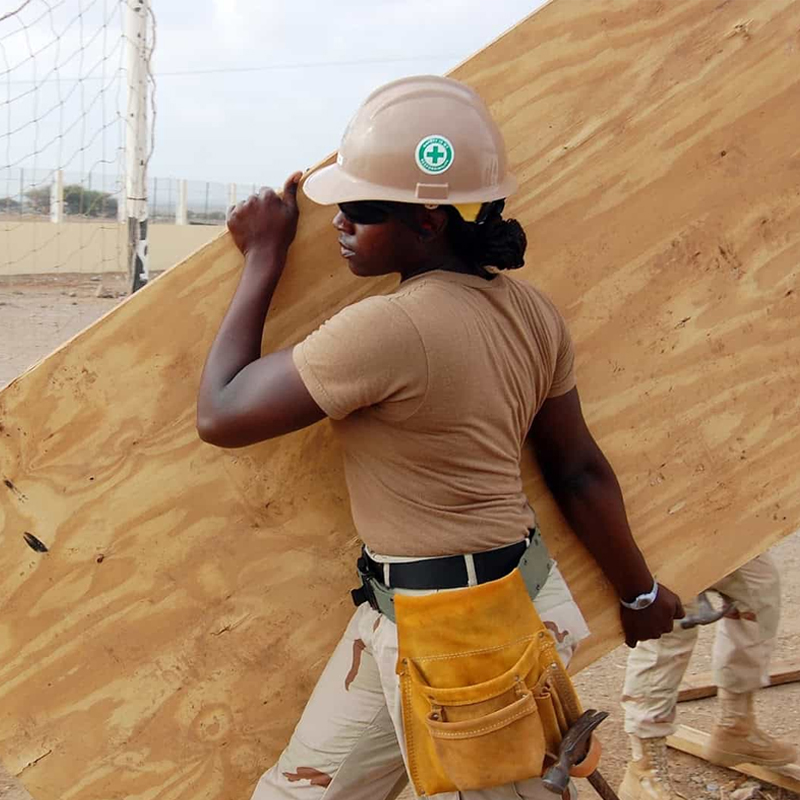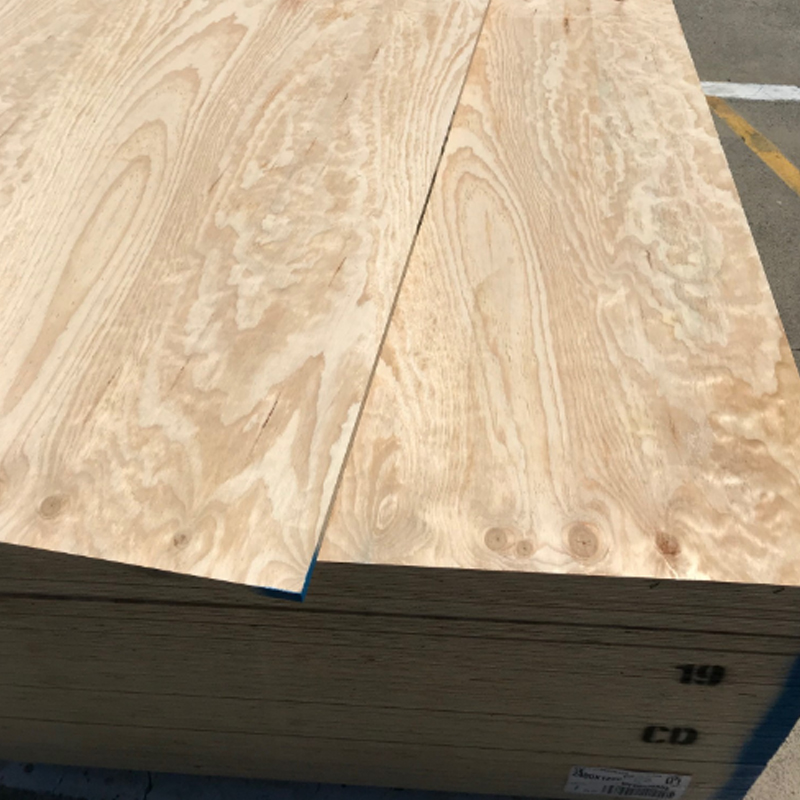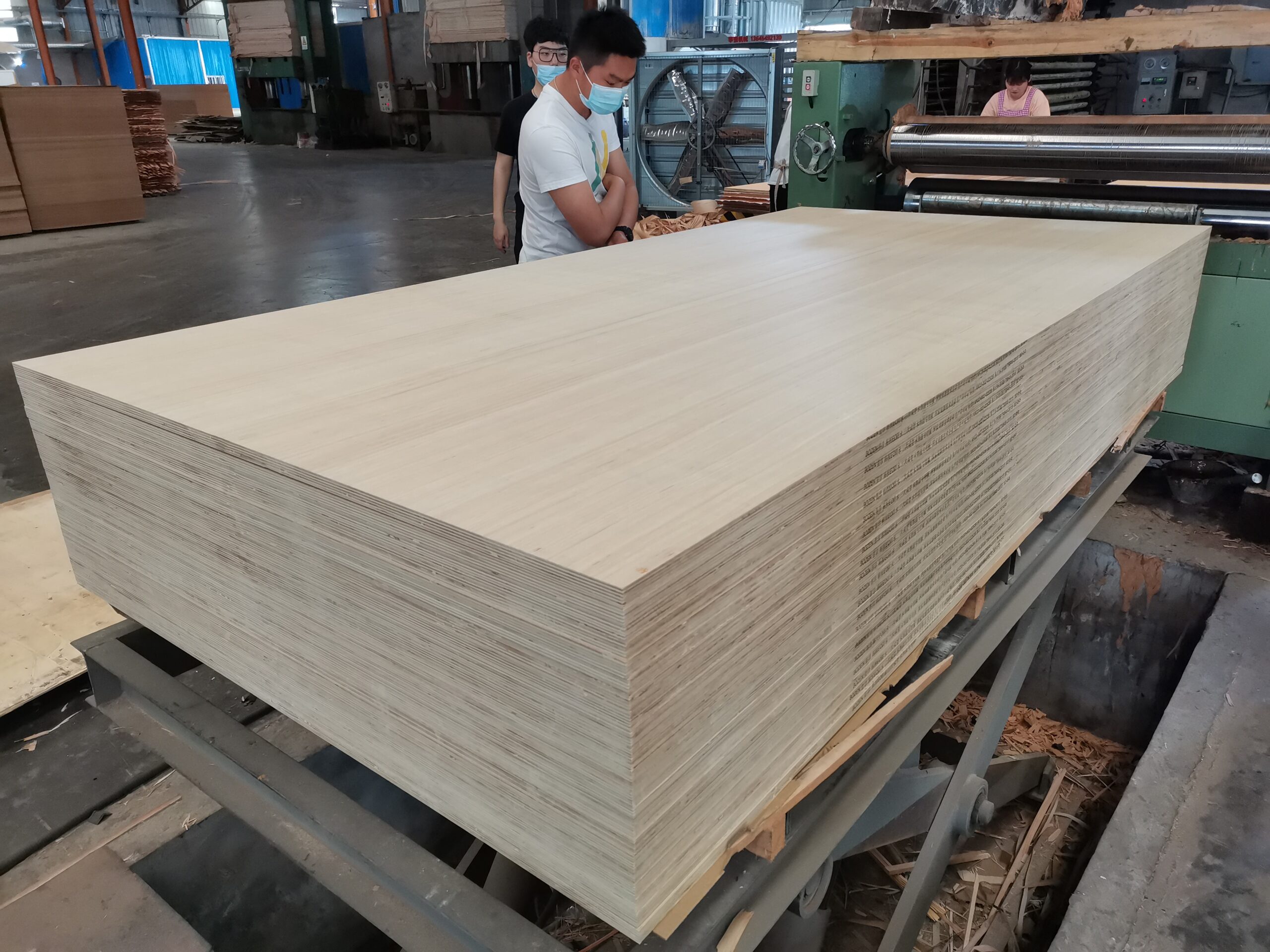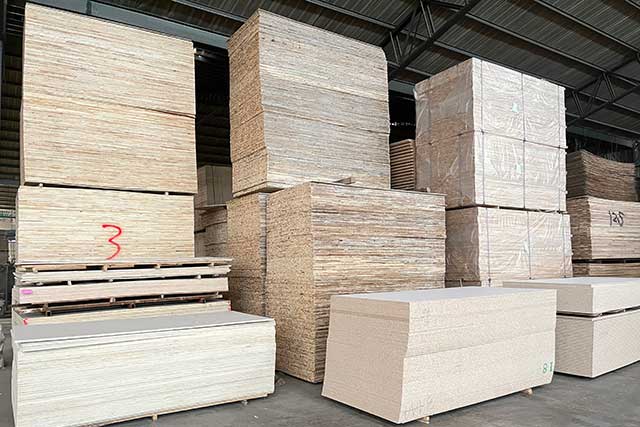Plywood is a board made of thin wood chips or other bondable materials stacked and staggered in layers, and then treated with glue and high temperature and pressure. It is a very practical and multifunctional building material and is widely used in construction, decoration, furniture manufacturing and other fields. The following is an introduction to the development of plywood:

The development of plywood dates back to the early twentieth century. At the time, advances in industrial technology and an increased demand for wood prompted a search for a more efficient way to utilize wood. The emergence of plywood has filled some of the shortcomings of traditional solid wood panels, such as chapter changes, dimensional instability, etc.
With the continuous advancement of technology and manufacturing processes, the quality and application range of plywood continue to expand. The glue used to make plywood has been continuously improved, which has greatly improved the bonding strength of plywood and has better moisture resistance and durability.
Plywood is known for its excellent physical and mechanical properties. The laminated structure of plywood gives it good bending, shear and compression resistance, making it widely used in the field of structural construction. In house construction, plywood serves as a base material for floors, walls and roofs, providing stable and even load distribution, increasing the strength and stability of the structure.

Plywood also has excellent surface flatness and malleability, making it a commonly used material in furniture manufacturing. The surface of plywood is smooth and flat, and can provide various decorative effects for furniture, such as paint, veneer, coating, etc. In addition, plywood can also be customized to meet the needs of different furniture designs and provide personalized home solutions.
Modern plywood manufacturing technology has not only increased output and quality, but also increased environmental concerns. The use of renewable resources and environmentally friendly glue reduces the consumption of forest resources and environmental load. At the same time, wood will be efficiently utilized during the plywood production process to reduce waste.
In general, plywood is a continuously developed and improved building material with excellent physical and mechanical properties, surface decoration and plasticity. It plays an important role in construction and furniture manufacturing and is increasingly favored by designers and consumers. In the future, with further technological innovation and process improvement, the application prospects of plywood will be even broader.

As a common building material, plywood has many advantages. The following is an introduction to the advantages of plywood:
Uniform and stable: Plywood is made of multiple layers of wood chips bonded with glue, so it has good uniformity and stability and is not prone to cracks and warping.
High strength: The multi-layer staggered structure of plywood gives it excellent strength and can withstand large loads and forces, so it is often selected as a structural material in construction and furniture manufacturing.
Strong durability: Plywood has good wear resistance, corrosion resistance and water resistance, and can maintain good appearance and functionality for a long time.
Easy to process: Plywood has a flat surface and is easy to process with sawing, planing, nailing, drilling, etc. It can be cut and customized as needed, and is suitable for application scenarios of different shapes and sizes.
Environmentally friendly and sustainable: When producing plywood, wood residues, small wood chips and other resources are used, which reduces the direct consumption of logs and is conducive to forest protection and resource recycling.
Good decorative properties: The surface of plywood is flat and can be subjected to various decorative treatments, such as spraying, veneering, painting, etc., providing a variety of appearance options to meet the needs of different decoration styles.
Diverse choices: Plywood can be made of different types of wood, such as pine, walnut, oak, etc., with a variety of materials and textures, suitable for different decoration styles and design needs.

In general, plywood has a series of advantages such as uniformity and stability, high strength, durability, easy processing, environmental protection and sustainability, good decorative properties and diversified choices, making it one of the important materials widely used in the construction and furniture manufacturing fields. one.

